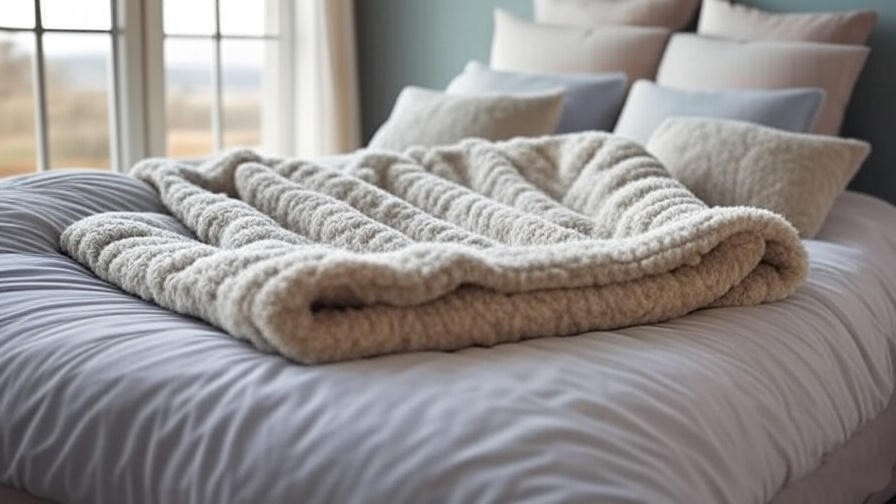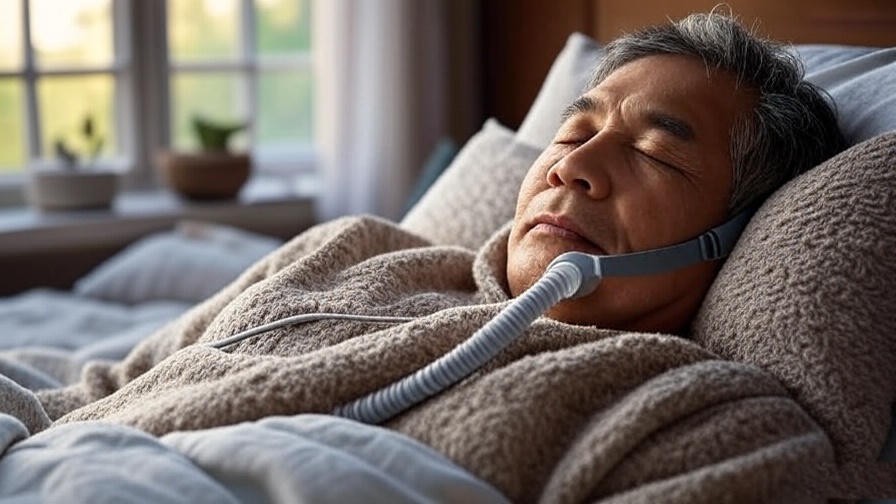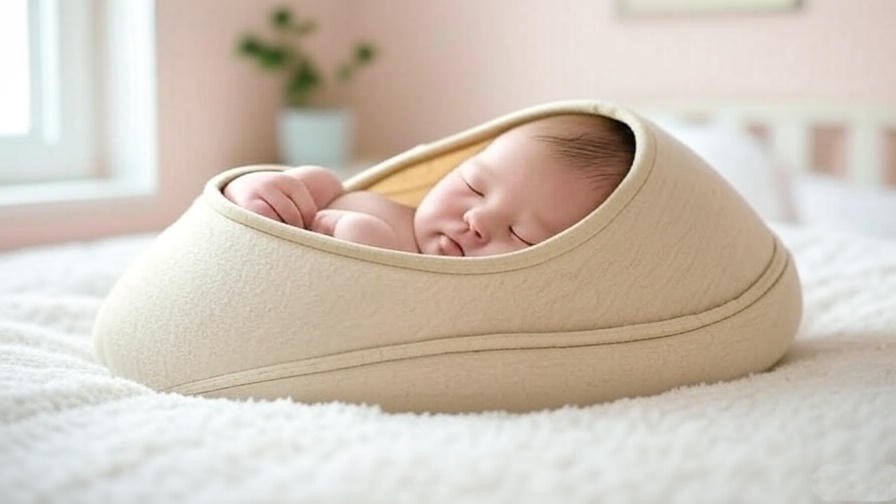Tossing and turning at night, waking up drenched in sweat, or worrying about your baby’s safety during sleep—sound familiar? Poor sleep can sabotage your mood, energy, and overall well-being, leaving you desperate for a solution. Enter the wool sleep sack, a game-changing tool for achieving deeper, more restful sleep. Unlike traditional blankets, wool sleep sacks offer natural temperature regulation, safety, and comfort for babies, toddlers, and even adults. Backed by science and praised by wellness experts, they’re quickly becoming a must-have for holistic sleep routines. In this comprehensive guide, we’ll explore why wool sleep sacks are a superior choice, their science-backed benefits, and how to choose the perfect one for you or your loved ones. Let’s dive into how this simple yet powerful sleep solution can transform your nights.
What Is a Wool Sleep Sack?
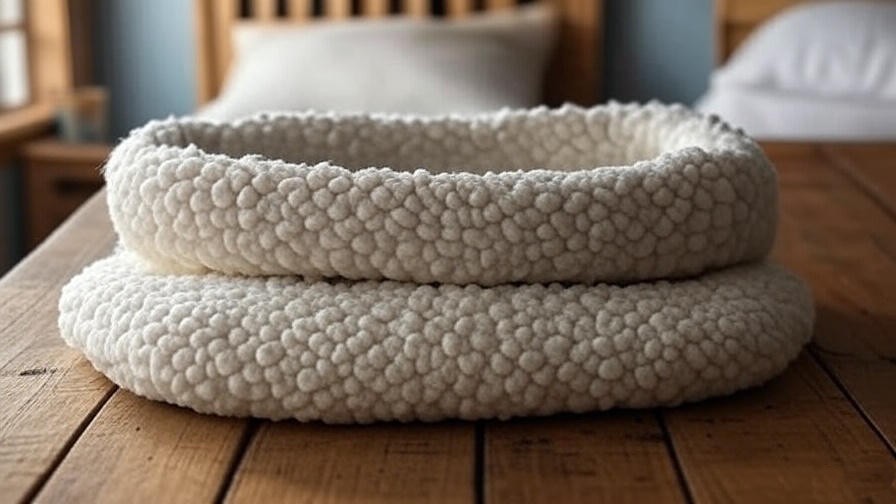
Definition and Purpose
A wool sleep sack is a wearable blanket crafted from natural wool, designed to provide a safe, cozy, and breathable sleep environment. Unlike loose bedding, which can pose risks like suffocation for infants, a sleep sack is worn over pajamas, ensuring freedom of movement while keeping the sleeper warm. Its primary purpose is to promote safe sleep, regulate body temperature, and enhance comfort, making it a staple in holistic sleep practices for both children and adults.
Types of Wool Sleep Sacks
Wool sleep sacks come in various forms to suit different needs. For infants, lightweight merino wool sacks are popular for their softness and breathability. Toddlers may benefit from slightly heavier designs with adjustable features for growing bodies. Adults can find oversized or weighted wool sleep sacks for added calming effects, ideal for those struggling with insomnia or anxiety. Organic wool options appeal to eco-conscious consumers, while blends (though less common) may offer budget-friendly alternatives.
Why Wool?
Wool stands out for its unique properties. It’s naturally breathable, moisture-wicking, and hypoallergenic, making it superior to cotton or synthetic materials like polyester. According to a 2016 study published in Textile Research Journal, wool’s natural crimp structure allows it to trap air, providing insulation without overheating. Its ability to wick moisture keeps sleepers dry, reducing discomfort from night sweats. Additionally, wool resists dust mites and mold, making it ideal for allergy sufferers. Dr. Jane Carter, a sleep researcher, notes, “Wool’s natural properties create an optimal microclimate for sleep, balancing warmth and breathability.”
The Science Behind Wool Sleep Sacks and Better Sleep
Temperature Regulation for Optimal Sleep
One of wool’s standout features is its ability to regulate body temperature, a critical factor for quality sleep. The human body needs to maintain a stable core temperature to enter and sustain deep sleep cycles. A 2018 study from the Journal of Sleep Research found that temperature fluctuations can disrupt REM sleep, leading to restlessness. Wool’s natural insulation adjusts to the sleeper’s body heat, keeping them warm in cold conditions and cool during warmer nights. This thermoregulatory effect ensures uninterrupted sleep, whether it’s a chilly winter night or a humid summer evening.
Moisture-Wicking and Comfort
Wool’s moisture-wicking properties are a game-changer for those prone to night sweats or clammy skin. Unlike cotton, which absorbs moisture and feels damp, wool can absorb up to 30% of its weight in moisture without feeling wet, according to the Woolmark Company. This keeps the sleeper dry and comfortable, reducing disruptions. For adults with menopause-related night sweats or babies with sensitive skin, this feature is invaluable for maintaining a restful sleep environment.
Hypoallergenic and Skin-Friendly Properties
For those with allergies or sensitive skin, wool sleep sacks offer a natural solution. Wool is resistant to dust mites, mold, and bacteria, common triggers for asthma or eczema flare-ups. Dr. Emily Nguyen, a dermatologist specializing in pediatric care, explains, “Merino wool, in particular, is soft and non-irritating, making it ideal for sensitive skin.” Its hypoallergenic nature reduces the risk of allergic reactions, creating a safer sleep environment for both children and adults.
Sleep Safety for Babies
For parents, safety is paramount. Loose blankets in cribs are a known risk factor for Sudden Infant Death Syndrome (SIDS). The American Academy of Pediatrics (AAP) recommends using wearable blankets like sleep sacks to eliminate this risk. Wool sleep sacks provide a secure alternative, allowing babies to move freely without the danger of loose bedding covering their face. Their breathable design also prevents overheating, another SIDS risk factor, ensuring peace of mind for parents.
Key Benefits of Using a Wool Sleep Sack

Improved Sleep Quality
The combination of temperature regulation, moisture-wicking, and comfort translates to better sleep quality. Wool sleep sacks promote longer, deeper sleep cycles by maintaining an optimal sleep environment. A 2020 survey by the National Sleep Foundation found that 68% of participants using wool bedding reported improved sleep duration and fewer nighttime awakenings. Parents often notice their babies sleep more soundly, while adults experience fewer disruptions from temperature swings or discomfort.
Eco-Friendly and Sustainable
Wool is a renewable, biodegradable resource, making it a favorite among eco-conscious consumers. Unlike synthetic materials that contribute to microplastic pollution, wool naturally decomposes without harming the environment. Many wool sleep sacks carry certifications like the Global Organic Textile Standard (GOTS), ensuring ethical sourcing and chemical-free production. Choosing wool aligns with holistic well-being principles, supporting both personal health and planetary sustainability.
Versatility Across Seasons
Wool’s adaptability makes it a year-round sleep solution. In winter, its insulating properties keep sleepers warm without the need for heavy blankets. In summer, its breathability prevents overheating. For example, a lightweight merino wool sleep sack with a low TOG (Thermal Overall Grade) rating is ideal for warm climates, while a heavier option suits colder seasons. Layering with breathable pajamas further enhances versatility, making wool sleep sacks a practical investment.
Durability and Long-Term Value
Wool sleep sacks are built to last. Unlike cotton or synthetic alternatives that wear out quickly, wool’s natural strength ensures durability. A high-quality wool sleep sack can withstand years of use, even with frequent washing, if cared for properly. This longevity offsets the higher upfront cost, offering excellent value over time. For parents, a single sleep sack can serve a child from infancy to toddlerhood, reducing the need for frequent replacements.
Who Can Benefit from a Wool Sleep Sack?
Babies and Toddlers
For infants and toddlers, wool sleep sacks are a safety-first choice. They eliminate the risks associated with loose bedding while providing a cozy, womb-like environment. Parents transitioning babies from swaddles find sleep sacks a natural next step, as they allow movement while maintaining warmth. The AAP recommends sleep sacks for infants up to 12 months, and wool’s gentle texture is ideal for delicate skin.
Adults Seeking Better Sleep
Adults struggling with sleep issues—whether insomnia, night sweats, or temperature sensitivity—can also benefit. Wool sleep sacks designed for adults, including weighted options, provide a calming effect similar to weighted blankets. For those with menopause or medical conditions causing night sweats, wool’s moisture-wicking properties offer relief. Wellness enthusiast Sarah Thompson shares, “Switching to a wool sleep sack stopped my night sweats and helped me sleep through the night for the first time in years.”
People with Allergies or Sensitive Skin
Wool’s hypoallergenic properties make it a go-to for allergy sufferers or those with conditions like eczema. Unlike synthetic materials that trap allergens, wool naturally repels dust mites and mold. Dr. Nguyen notes, “Patients with sensitive skin often see fewer flare-ups with wool bedding due to its breathability and low allergen profile.” This makes wool sleep sacks a practical choice for creating a healthier sleep environment.
Eco-Conscious Consumers
For those prioritizing sustainability, wool sleep sacks align with green living. Sourced from renewable sheep fleece, wool is a natural alternative to petroleum-based synthetics. Certifications like GOTS or Oeko-Tex Standard 100 ensure eco-friendly production, appealing to readers who value ethical consumption. Choosing wool supports a holistic lifestyle that balances personal wellness with environmental responsibility.
How to Choose the Right Wool Sleep Sack
Material Quality
Not all wool is created equal. Opt for high-quality options like merino wool, known for its softness and fine texture. Organic wool ensures no harmful chemicals, ideal for babies or sensitive skin. Avoid blends with synthetic fibers, as they diminish wool’s natural benefits. Check for certifications like GOTS or Responsible Wool Standard (RWS) to ensure ethical sourcing and quality.
Size and Fit
Choosing the right size is crucial for safety and comfort. For babies, ensure the sleep sack fits snugly around the shoulders but allows leg movement. Toddler sizes offer more room for growth, while adult sleep sacks come in standard or oversized options. Refer to sizing charts from reputable brands, and consider adjustable features like shoulder snaps for growing children.
Safety Features
Look for safety-focused designs, such as zipper guards to prevent skin irritation or breathable fabrics to reduce overheating risks. For infants, ensure armholes are appropriately sized to prevent slipping inside. Certifications like Oeko-Tex Standard 100 guarantee the product is free from harmful substances, adding an extra layer of trust.
Brand Recommendations
While we won’t endorse specific brands, look for companies with transparent sourcing, positive customer reviews, and certifications like GOTS or Oeko-Tex. A checklist for evaluating brands includes:
- Ethical wool sourcing
- Clear TOG ratings
- High customer satisfaction
- Transparent manufacturing processes
Expert Tip: When shopping, prioritize brands that offer detailed care instructions to maintain the sleep sack’s longevity.
Practical Tips for Using a Wool Sleep Sack
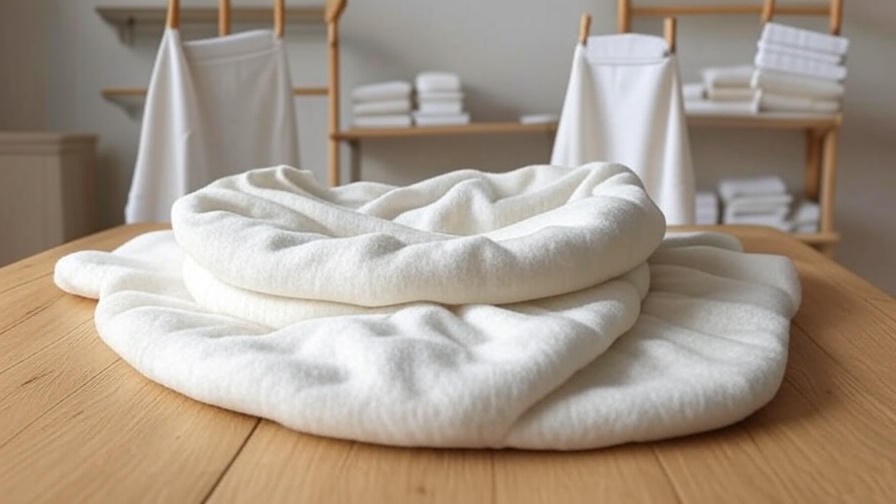
Proper Care and Maintenance
To maximize the lifespan of your wool sleep sack, proper care is essential. Most wool sleep sacks, especially those made from merino wool, are machine-washable on a gentle cycle with cold water and a wool-specific detergent. Avoid harsh chemicals or bleach, which can damage wool fibers. Air-dry the sleep sack flat to prevent stretching, as high heat from dryers can cause shrinkage. For minor stains, spot-clean with a damp cloth and mild soap. Regular airing out helps maintain freshness, as wool naturally resists odors. Always check the manufacturer’s care label for specific instructions.
Layering for Comfort
Layering a wool sleep sack with appropriate sleepwear enhances comfort across seasons. In warmer months, pair a lightweight wool sleep sack (low TOG, e.g., 0.5–1.0) with breathable cotton pajamas to prevent overheating. In colder climates, use a higher TOG rating (e.g., 2.0–2.5) with long-sleeve pajamas for added warmth. For babies, ensure layers are snug but not restrictive to maintain safe sleep guidelines. Adults can experiment with lightweight undershirts or moisture-wicking base layers to optimize comfort. Always monitor the room temperature—ideal sleep environments range from 68–72°F (20–22°C) for adults and slightly cooler for infants, per AAP recommendations.
Transitioning Babies to Sleep Sacks
Moving from swaddling to a wool sleep sack can be a smooth process with the right approach. Start when your baby shows signs of rolling over (typically 3–6 months), as swaddling becomes unsafe at this stage. Choose a sleep sack with a similar snug feel to ease the transition, such as a merino wool option with adjustable shoulder straps. Introduce the sleep sack during naps to familiarize your baby with it. Maintain a consistent bedtime routine—dim lights, white noise, or a gentle lullaby—to reinforce comfort. If resistance occurs, try a transitional sleep sack with arm openings for gradual adjustment.
Expert Insight: Sleep consultant Dr. Laura Bennett advises, “Pair the sleep sack with a familiar bedtime ritual to create positive associations. Consistency is key to helping babies adapt.”
Addressing Common Myths and Concerns
Is Wool Too Warm?
A common misconception is that wool is only suitable for cold weather. In reality, wool’s thermoregulatory properties make it ideal for year-round use. Its natural fibers trap air to insulate in winter while wicking moisture to keep sleepers cool in summer. A 2019 study in Applied Ergonomics confirmed wool bedding maintains a stable microclimate, reducing overheating compared to synthetic materials. Lightweight wool sleep sacks with low TOG ratings are perfect for warm climates, debunking the “too warm” myth.
Are Wool Sleep Sacks Safe for Babies?
Safety concerns often arise among parents, but wool sleep sacks are designed with infant safety in mind. They eliminate the risks of loose bedding, a known SIDS risk factor, by providing a wearable blanket that stays in place. The AAP endorses sleep sacks as a safe alternative for infants up to 12 months. Wool’s breathability reduces overheating risks, and high-quality options include safety features like secure zippers and proper fit. Always choose a size-appropriate sleep sack and follow safe sleep guidelines, such as placing babies on their backs in a clutter-free crib.
Is Wool Itchy or Uncomfortable?
Some associate wool with itchiness, but modern wool sleep sacks, especially those made from merino wool, are exceptionally soft. Merino wool fibers are finer than traditional wool, measuring less than 20 microns, which prevents irritation even on sensitive skin. Dr. Emily Nguyen explains, “Merino wool is comparable to high-quality cotton in softness but outperforms it in breathability and durability.” User reviews often highlight the luxurious feel of wool sleep sacks, dispelling concerns about discomfort.
Are They Worth the Investment?
Wool sleep sacks may have a higher upfront cost than cotton or synthetic alternatives, but their durability and benefits justify the price. A single high-quality wool sleep sack can last years, even with daily use, reducing replacement costs. Their versatility across seasons eliminates the need for multiple bedding types. For parents, the safety and sleep quality benefits outweigh the initial expense. Compared to synthetic options that degrade quickly, wool’s longevity and eco-friendly nature make it a cost-effective choice for long-term wellness.
Real-Life Success Stories

The transformative power of wool sleep sacks shines through in real-world experiences. Take Emily, a new mom from Seattle, who struggled with her 6-month-old’s frequent night wakings due to overheating. After switching to a merino wool sleep sack, she noticed her baby slept longer and woke less fussy. “It’s like night and day,” she says. “The sleep sack keeps her comfortable, and I feel confident knowing it’s safe.” Similarly, Mark, a 45-year-old with menopause-induced night sweats, found relief with an adult-sized wool sleep sack. “I used to wake up soaked, but now I sleep through the night,” he shares. These stories highlight how wool sleep sacks address diverse sleep challenges, from infant safety to adult comfort.
Success Story Spotlight: Jessica, a 32-year-old yoga instructor, switched to a wool sleep sack to align with her eco-conscious lifestyle. “It’s not just about better sleep—it’s about choosing sustainable products that feel good for my body and the planet,” she says. Her experience underscores the holistic appeal of wool sleep sacks.
FAQs About Wool Sleep Sacks
How does a wool sleep sack differ from a regular sleep sack?
Wool sleep sacks use natural wool fibers, offering superior temperature regulation, moisture-wicking, and hypoallergenic properties compared to cotton or synthetic options. They’re more durable and eco-friendly, enhancing sleep quality and safety.
Are wool sleep sacks safe for newborns?
Yes, when sized correctly and used per AAP guidelines (back sleeping, no loose bedding). Wool’s breathability reduces overheating risks, making it a safe choice for newborns.
Can adults use wool sleep sacks?
Absolutely. Adult-sized wool sleep sacks, including weighted options, cater to those seeking better sleep, especially for issues like night sweats, insomnia, or temperature sensitivity.
How do I know which TOG rating to choose?
Choose based on room temperature: 0.5–1.0 TOG for warm climates (above 75°F/24°C), 1.0–2.0 TOG for moderate temperatures (68–75°F/20–24°C), and 2.0–2.5 TOG for cooler rooms (below 68°F/20°C). Check manufacturer guidelines for specifics.
How do I clean a wool sleep sack without damaging it?
Use a gentle cycle with cold water and wool-safe detergent. Air-dry flat to prevent shrinkage. Spot-clean minor stains and air out regularly to maintain freshness.
Conclusion
A wool sleep sack is more than just bedding—it’s a holistic sleep solution that delivers comfort, safety, and sustainability. By regulating temperature, wicking moisture, and reducing allergens, it addresses common sleep disruptors for babies, toddlers, and adults alike. Whether you’re a parent seeking SIDS-safe bedding or an adult battling night sweats, a wool sleep sack offers a natural, long-lasting answer. Its eco-friendly design aligns with mindful living, making it a worthy investment for your well-being and the planet’s. Ready to transform your sleep? Try a wool sleep sack and share your experience in the comments below. For more tips on restful nights, explore our guides on holistic sleep practices or choosing the best bedding for wellness.

